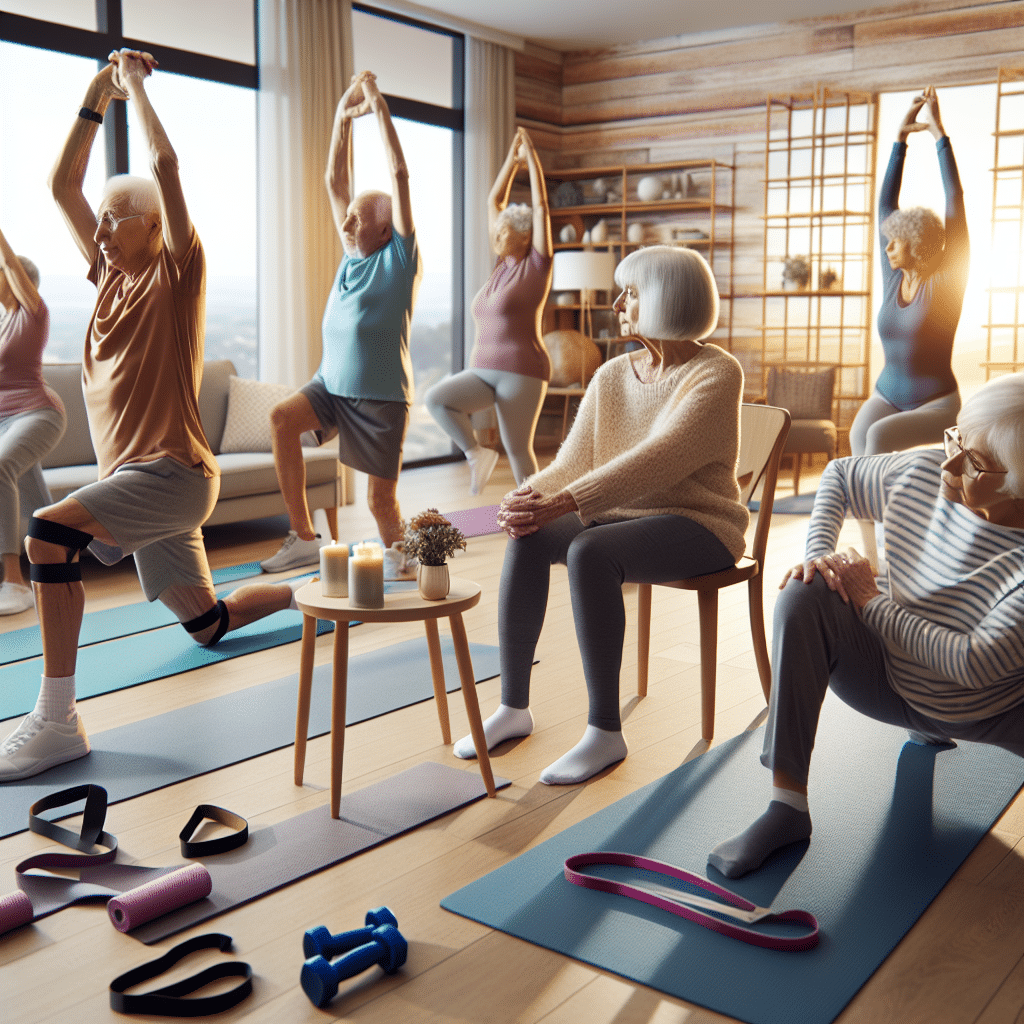Importance of Flexibility Exercises for Seniors
Flexibility exercises are vital for seniors as they enhance mobility, improve posture, and reduce the risk of injury. As people age, their muscles and joints tend to become stiffer, leading to decreased range of motion. Regular flexibility workouts can counteract this natural decline, making daily activities easier and promoting overall well-being.
Benefits of Flexibility Exercises
-
Enhanced Mobility: Flexibility exercises enable seniors to move freely, improving their ability to perform daily tasks.
-
Reduced Pain: Stretching helps alleviate muscle tension and reduce chronic pain.
-
Injury Prevention: Improved flexibility can prevent falls and injuries, which are common concerns for older adults.
-
Better Posture: Regular flexibility training reinforces good posture, which is essential for spine health.
-
Increased Blood Circulation: Stretching stimulates blood flow to the muscles, enhancing overall health and recovery.
Essential Flexibility Exercises for Seniors
Here are several effective flexibility exercises that seniors can perform comfortably at home:
1. Neck Stretch
- How to Perform: Sit or stand upright. Gently tilt your head towards one shoulder, feeling a stretch in your neck. Hold for 15-30 seconds, then switch to the other side.
- Reps: 2-3 times per side.
2. Shoulder Stretch
- How to Perform: Bring your right arm across your body at shoulder height. Use your left arm to press the right arm closer to your chest. Hold and switch sides.
- Reps: 2-3 times per side.
3. Chest Opener
- How to Perform: Stand tall and clasp your hands behind you. Straighten your arms and lift them slightly away from your body, opening up your chest.
- Duration: Hold for 15-30 seconds.
4. Standing Quadriceps Stretch
- How to Perform: Stand holding onto a stable surface for support. Bend one knee, bringing your heel towards your buttock. Grab your ankle with your hand, keeping your knees together. Hold and switch sides.
- Duration: Hold for 15-30 seconds.
5. Seated Hamstring Stretch
- How to Perform: Sit on the edge of a chair with one leg extended straight out, heel on the floor. Keeping your back straight, lean forward slightly until you feel a stretch in the back of the thigh.
- Duration: Hold for 15-30 seconds, then switch legs.
6. Butterfly Stretch
- How to Perform: Sit on the floor and bring your feet together, letting your knees drop outward. Gently press down on your knees for a deeper stretch.
- Duration: Hold for 15-30 seconds.
7. Cat-Cow Stretch
- How to Perform: Start on all fours (hands under shoulders, knees under hips). Inhale as you arch your back (Cow Position), then exhale as you round your back (Cat Position).
- Reps: 5-10 times.
8. Seated Torso Twist
- How to Perform: Sit upright in a chair. Place your right hand on the back of the chair and twist your torso to the right while looking over your shoulder. Hold and repeat on the left side.
- Duration: Hold for 15-30 seconds each side.
9. Side Stretch
- How to Perform: Stand with your feet shoulder-width apart. Raise one arm overhead and lean to the opposite side, feeling the stretch along your side. Hold and switch sides.
- Duration: Hold for 15-30 seconds each side.
10. Ankle Circles
- How to Perform: Sit on a chair and lift one foot off the ground. Rotate the ankle in a circular motion, both clockwise and counterclockwise.
- Reps: 10 circles in each direction per foot.
Tips for Safe Stretching
-
Warm-Up: Always begin with a light warm-up—such as marching in place—to prepare your body for stretching.
-
Focus on Breath: Breathe deeply throughout each stretch, as it promotes relaxation and maximizes the benefits of flexibility routines.
-
Listen to Your Body: Stretch only to the point of mild discomfort, avoiding any sharp pain.
-
Stay Consistent: Aim to incorporate flexibility exercises into your routine at least 3-4 times a week for optimal results.
-
Use Props: Pillows, straps, or towels can aid in achieving deeper stretches without strain.
Flexibility Routine Structure
Creating a dedicated flexibility routine can further benefit seniors. Here’s a suggested sequence:
- Start with neck and shoulder stretches for 5 minutes.
- Follow with upper body stretches, such as the chest opener and side stretch, for an additional 5 minutes.
- Transition to lower body stretches, including the seated hamstring and standing quadriceps stretches for 10 minutes.
- Conclude with cool-down stretches, focusing on the back and spine, such as the Cat-Cow and seated torso twists.
Conclusion
Incorporating flexibility exercises into daily routines can significantly enhance the quality of life for seniors. By engaging in consistent stretching practices, seniors can enjoy improved mobility, reduce pain, and maintain a level of independence in their daily activities. Regular stretching not only promotes physical benefits but also encourages relaxation and mental well-being, paving the way for a more fulfilling and active lifestyle.
